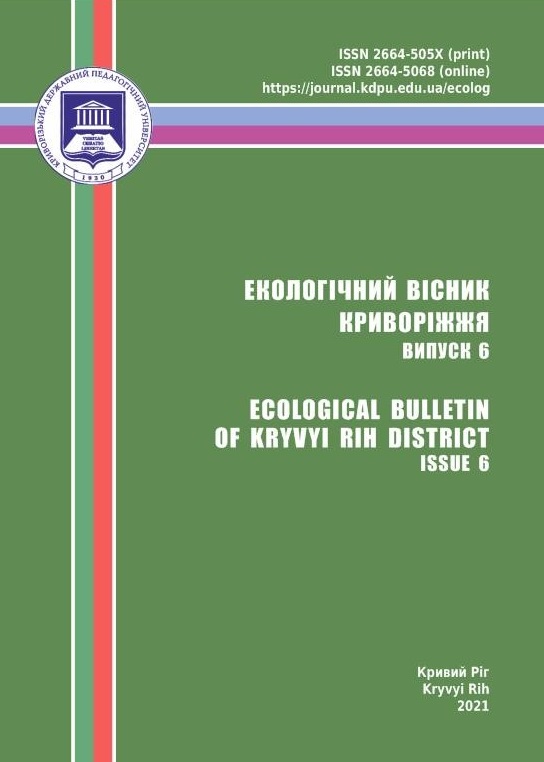EVALUATION OF THE PROTECTIVE EFFECTIVENESS OF AQUEOUS PLANT EXTRACTS IN THE COMPOSITION OF CORROSION INHIBITOR EXTRACT
DOI:
https://doi.org/10.31812/eco-bulletin-krd.v6i0.4565Keywords:
green inhibitors, corrosion inhibitors, metal corrosion, plant extractsAbstract
An urgent scientific and technical task is the study of corrosion
processes and finding cheap and effective methods of protection. As a result of
corrosion destruction, about 10% of annual metal production is lost. Therefore,
considerable attention is paid to anti-corrosion measures. Rust inhibitors are
an effective way to remove rust and protect against corrosion. Recently, the
so-called “green inhibitors” have aroused increased interest. Many plants are a
source of such inhibitors, a complex of compounds — alkaloids, polysaccharides,
proteins, mucous and tannins. All of them, although to varying degrees,
have the ability to be adsorbed on a metal surface and fixed on it. We
conducted research on the possibility of protecting metals from corrosion
with extracts: Tomato edible Lycopersicum, Celandine Chelidonium majus L,
Althaea Althaea officinalis L., Yarrow Achillea millefolium.
Downloads
Metrics
References
Vorobyova, V. I., Chyhyrynets, О. Е., & Chyhyrynets, E. O. (2013). Investigation of anticorrosive properties of volatile inhibitors of atmospheric corrosion on the basis of vegetable raw materials. Scientific news “KPI”, 1, 123–128.
Vorobyova, V. I., Chigirinets, O. E., Lipatov, S. Yu., & Chyhyrynets, E. O. (2013). Determination of corrosion resistance of vapor-phase inhibitor in the conditions of periodic condensation of moisture. Bulletin of the East Ukrainian National University, 13, 66–73.
Slobodyan, Z. V., Maglatyuk, L. A., Kupovych, R. B., & Khabursky Ya. M. (2014). Compositions based on extracts from oak bark and shavings - corrosion inhibitors of medium carbon steels in water. Phys.-Chem. mechanics of materials, 50 (5), 58–66.
Mikhailovsky, Yu. N. (1989). Atmospheric corrosion of metals and methods of their protection. Moscow: Metallurgy.
Reshetnikov, S. M. (1986). Inhibitors of acid corrosion of metals. Leningrad: Chemistry.
Saenko, V. I., & Vysotska, L. M. (2015). Corrosion protection of metal structures and products with effective environmentally friendly means of plant origin. Construction production, 58, 56–65.
Khabursky, Ya. M. (2015). Anticorrosive properties of extracts of vegetable raw materials in a solution of hydrochloric acid. Phys.-Chem. mechanics of materials, 51 (1), 116–121.
Chigrines, E. E., Vorobyova, V. I., Galchenko, G. Y., & Roslik, I. G. (2012). Investigation of the effectiveness of atmospheric corrosion inhibitors. Metallurgical and mining industry, 2, 76–80.
Parthipan, P., Elumalai, P., Narenkumar, J., Machuca, L., Murugan, K., Karthikeyan, O., & Rajasekar, A. (2018). Allium sativum (garlic extract) as a green corrosion inhibitor with biocidal properties for the control of MIC in carbon steel and stainless steel in oilfield environments. Int. Biodeterior. Biodegrad., 132, 66–73.
Anupama, K., Ramya, K., & Joseph, A. (2017). Electrochemical measurements and theoretical calculations on the inhibitive interaction of Plectranthus amboinicus leaf extract with mild steel in hydrochloric acid. Measurement, 95, 297–305.
Shabani-Nooshabadi, M., & Ghandchi, M. (2015). Santolina chamaecyparissus extract as a natural source inhibitor for 304 stainless steel corrosion in 3.5% NaCl. J. Ind. Eng. Che., 31, 231–237.
Deyab, M., & Guibal, E. (2020). Enhancement of corrosion resistance of the cooling systems in desalination plants by green inhibitor. Sci. Rep., 10, 4812.
Mobin, M., Basik, M., & Aslam, J. (2019). Pineapple stem extract (Bromelain) as an environmental friendly novel corrosion inhibitor for low carbon steel in 1 M HCl. Measurement, 134, 595–605.
Brycki, B., Kowalczyk, I., Szulc, A., Kaczerewska, O., & Pakiet, M. (2018). Organic Corrosion Inhibitors. In Corrosion Inhibitors, Principles and Recent Applications. Aliofkhazraei, M. (ed.). InTech: London.
Richardson, J. A. (2010). Management of Corrosion in the Petrochemical and Chemical Industries. In Shreir’s Corrosion; Elsevier: Amsterdam, 3207–3229.
Papavinasam, S. (2011). Corrosion Inhibitors. In Uhlig’s Corrosion Handbook. Revie, R.W. (еd.). John Wiley & Sons Inc.: Hoboken, NJ.






